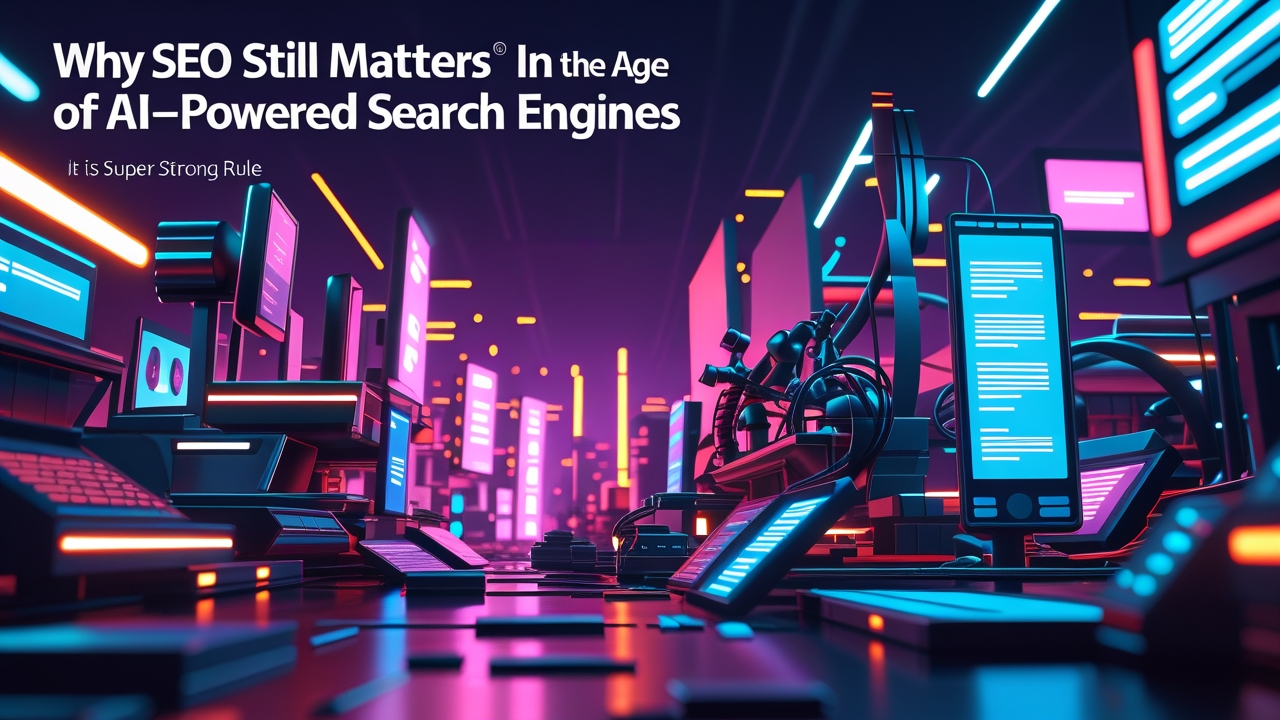Why SEO Still Matters in the Age of AI-Powered Search Engines


The digital landscape continues to transform as Google incorporates AI-powered features into Search, while third-party large language models reshape how users interact with online information. This evolution has prompted many CMOs and business founders to question their marketing investments, particularly in search engine optimization.
Table of Contents
Recent insights from Google’s Search Central Live in Bangkok highlighted a crucial reality: “Traffic patterns may fluctuate: Long-held traffic patterns are likely to fluctuate, creating new opportunities for all sites. Past success on Search may not guarantee future success.”
The Enduring Value of SEO Investment
Search engine optimization remains one of the rare marketing channels that builds momentum over time. Unlike paid advertising campaigns that cease delivering results the moment spending stops, a well-executed organic strategy continues generating traffic, leads, and sales long after implementation.
This compounding effect distinguishes SEO from most other digital marketing investments. Each quality content piece, technical improvement, and earned backlink contributes to a foundation that strengthens with continued investment. The strategy often delivers better performance over time, depending on competitive responses.
Rather than becoming obsolete, SEO is adapting to new realities. Success now requires mobile-optimized websites, content that demonstrates genuine expertise and experience, clean internal linking structures, and material that performs well within AI-generated summaries and varied search results. Modern SEO functions as brand presence building, not merely traffic generation.
There used to be two sources of traffic on the web: search and social.
Social disappeared as social networks mutated into TV channels and discouraged links. Now search is on the decline because of AI.
AI is swallowing search traffic, but it is different from search in one…
— César A. Hidalgo (@cesifoti) July 22, 2025
Understanding Brand Hesitation
Growing uncertainty stems from numerous changes affecting data interpretation and performance metrics. The search engine results page has undergone dramatic transformation, with AI Overviews and expanded result features pushing traditional organic listings lower on the page.
Many brands report diminished returns from equivalent effort levels, leading to frustration and concern. Simultaneously, performance reporting has become more complex and attribution less straightforward. SEO’s influence spans discovery, consideration, and conversion phases, making its contributions harder to isolate and potentially vulnerable during budget reviews.
Some teams misinterpret current signals, applying outdated measurement approaches to the evolved search ecosystem. The assumption that reduced click-through rates indicate decreased engagement overlooks visibility’s inherent value. Users who don’t click immediately may still take action later.
Reducing SEO investment now represents a strategic mistake. Organic search maintains its position as the web’s primary visibility mechanism, and abandoning content creation essentially means choosing invisibility. In an AI-driven search environment, visibility begins before users click. Brands maintaining active presence will be the ones users notice and remember.
Content’s Transformed Role
While top-of-funnel traffic may have changed, it retains significant influence. Appearing in AI Overviews or responses to broad queries still shapes user perception and can drive brand searches, direct visits, or future conversions.
The key metric isn’t simply result visibility, but the number of users taking meaningful subsequent actions. Modern SEO operates across the entire funnel and multiple formats, extending far beyond traditional ranked listings.
Content requirements have intensified. Individual pieces must now serve different user intents, address multiple questions, and appear across various formats including featured snippets, videos, product results, and AI-generated responses.
Navigating AI-Powered Search
AI-enhanced search distributes discovery across expanded surfaces beyond Google, including ChatGPT, Perplexity, Gemini, and emerging platforms. Maintaining visibility in this environment still requires consistent content production, which serves as the foundation for participation in digital conversations.
Contemporary SEO involves influencing how AI systems interpret brand information. Organizations not contributing to the information ecosystem allow others to control their narrative.
Effective SEO strategy now encompasses creating durable content with lasting value, building authority through links and mentions, balancing immediate wins with long-term objectives, and addressing complex queries that inform and convert users. Larger organizations with multiple brands gain additional advantages, as Google and AI models recognize entity relationships, allowing coordinated content to strengthen cross-brand authority.
SEO continues working, but operates differently than before. It functions as a visibility layer for traditional search, Google’s AI features, and various language models, serving as both reputation management and strategic asset beyond basic marketing channel functions.
The critical consideration isn’t whether to invest in SEO, but whether businesses can afford not to invest. Paid traffic disappears immediately when spending stops, while organic presence builds upon itself, providing one of the few channels delivering greater future returns from current efforts.
As AI transforms search appearance and functionality, SEO maintains relevance by supporting every digital presence layer. It creates owned assets rather than rented visibility. Successful brands will be those maintaining consistent activity despite changing conditions, focusing on influence rather than just clicks, and maintaining presence wherever users ask important questions.
In an uncertain landscape, SEO provides stability through long-term strategy that persists beyond budget limitations. For businesses planning beyond quarterly results, it represents one of the most intelligent investments available.



